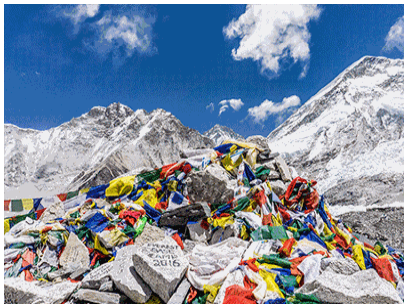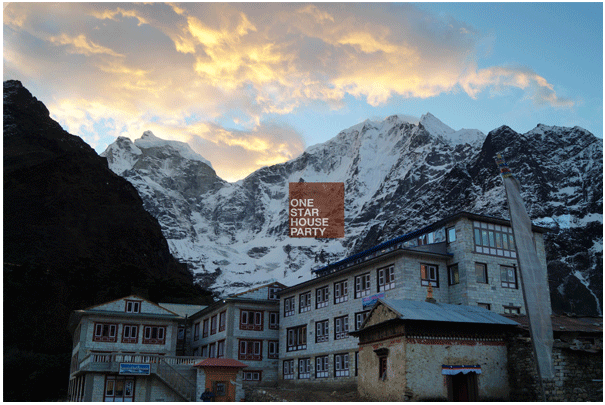According to the core concept every month he and his team of four friends spend three weeks planning and building a restaurant and one week serving food at a unique location. Everest base camp will be James’s fourth location in the series, after Beijing, Ho Chi Minh, and Bangkok.
In a free-wheeling conversation with us, James talked about the concept, its sustainability and how he will deal with the delicate environment of the Everest.
What made you think of opening a restaurant at Mount Everest base camp, of all places?
If we ask ourselves why we spend copious amounts of money on extravagant restaurants, the answer ultimately is that we are buying an experience, a memory for ourselves or others that we hope to cherish. Not because we’re exhilarated by a 20 page wine menu, the silverware or the artwork on the wall. I believe, sitting down at the base of the Himalayas, with the team of Sherpas, in our make shift restaurant, is an experience that will last. Surrounded by camp chairs, fire and a meal that everyone has had some hand into making possible, will be the meal and memory not easily forgotten.
How will you manage the logistics? Will it be a profitable venture?
Has the menu something to do with the weather? Will it be therapeutic or is it all about the palate and senses?
How will you manage not to freeze there?
This restaurant at base camp is among 1 of the 20 restaurants we are creating around the world on our tour. Strangely enough, base camp has actually been one of the simplest restaurants in our journey.
How do you plan to publicize your restaurant?
(Smiles) Well, it is happening automatically, though, we weren’t expecting it. We have already received over 7000 applications from Intrepid (Travel Company).
Do you think it is a sustainable idea?
Financially, what we do is obviously challenging. We don’t make a profit from each restaurant, just enough to move on to the next country and build our next pop-up. Admittedly, it takes a certain kind of diner to enjoy what we do. What they get in return is an unpolished, honest experience. Where the cost of their meal goes into the ingredients they eat, the materials we use to make the crockery they eat from and the discovery that made that meal possible.
Hope it will not disturb the delicate Everest ecological balance?
We choose the places where we build our restaurants based on a desire to learn from and enjoy them, not to exploit them. One thing that has surprised me over the last few weeks is the amount of people who have asked the same question. We are climbing 17,000 feet to explore a unique experience with limited resources and not to litter.
Who will be your clientele?
Despite the nature of our travelling restaurants moving from country to country, we are fortunate enough to have a few regular guests, who travel out to dine with us in each country. The guests coming with us are mostly those who have supported us from the beginning, and of course, the Sherpas.




